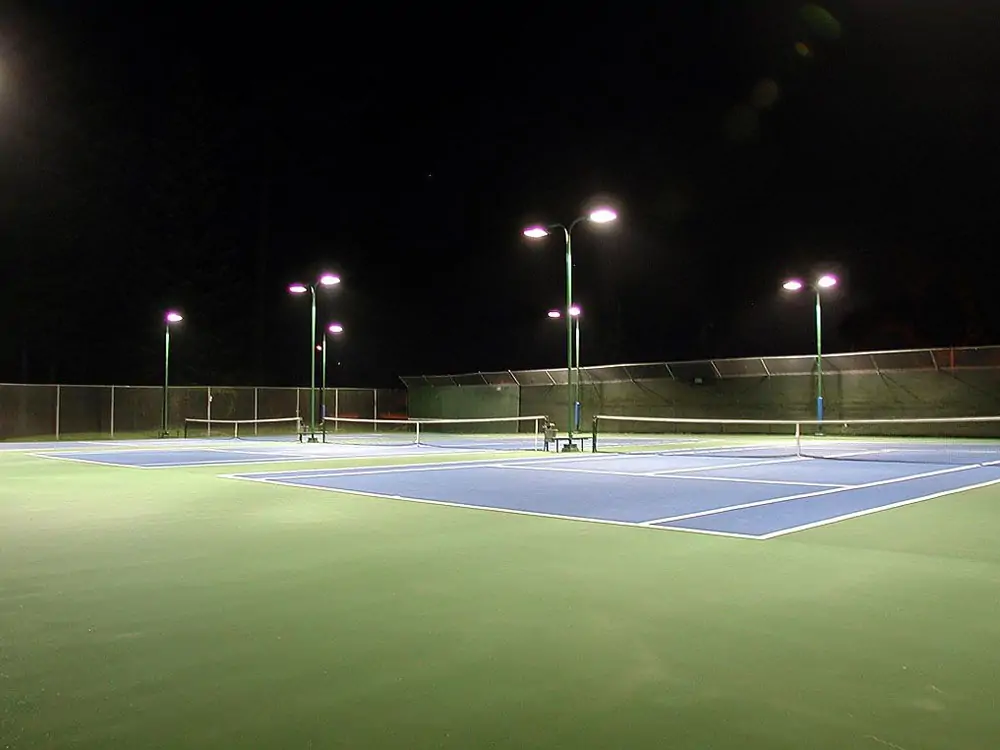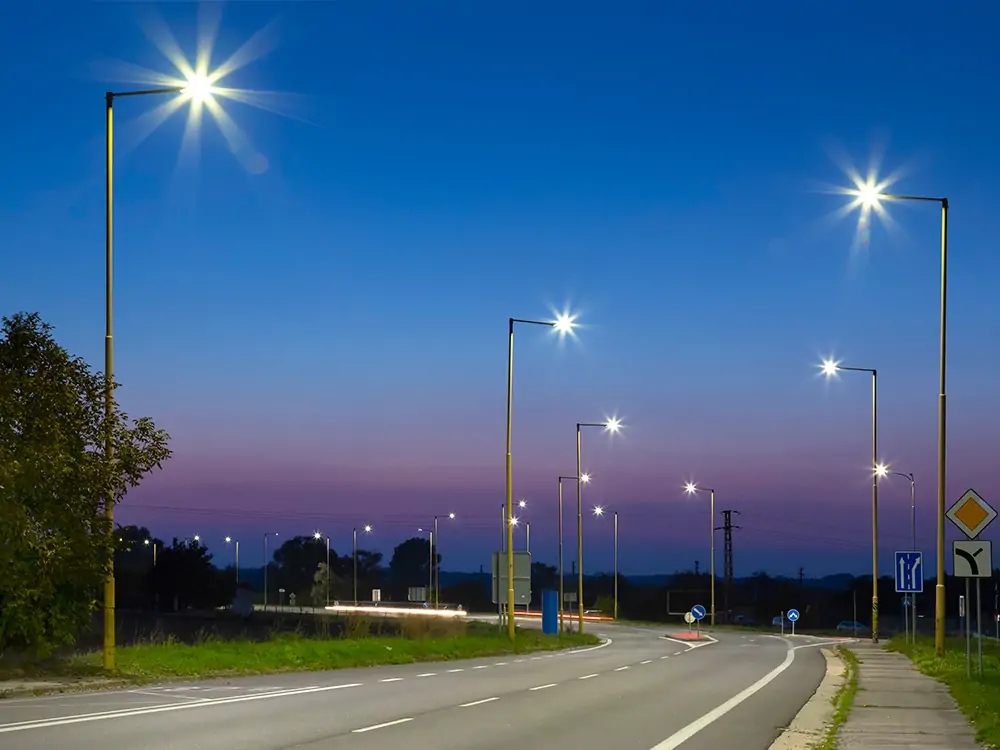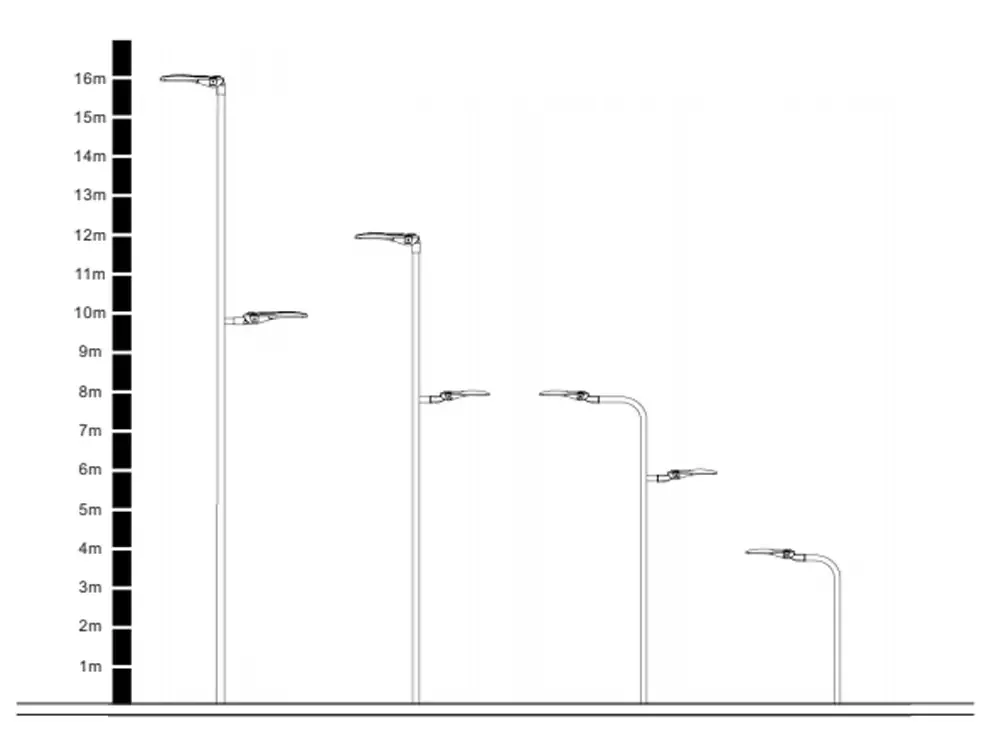LED lighting is an essential part of our everyday lives. They are present in our streets, highways, and commercial areas to serve the basic purpose of providing light. So, if you drive through the city or walk past a well-lit building, you will come across these lights. In particular, you’ll discover two common types of LED lights: streetlights and floodlights. LED streetlights and floodlights serve the purpose of illumination and share other similarities. However, they also have differences that make them suitable for specific uses. The design, light distribution, and installation requirements of an LED street light VS flood light vary. Understanding these differences is important for anyone involved in outdoor lighting projects. In this article, we will engage a battle between an LED street light VS flood light. This will help you know which option works best for different situations.
The Basics of Flood Light and Street Light


First, let’s cover the basics of these two lighting options. A floodlight is the Swiss army knife of illumination as a close-to-home comparison. It is versatile and provides perfect lighting to large areas unsuitable for other fixtures. The light beam of a floodlight is intense and literally “floods” everywhere with brilliant light. An accurate description of this occurrence is when a sports stadium blazes to life to mark the start of a game. The fact that you can see every tackle and goal with undeniable accuracy is the work of floodlights.
Unlike floodlights, LED streetlights are common on highway roads, intersections, and walkways. They create a controlled, carpet-like beam of light that makes them suitable for movement. They aren’t about dramatic performances. Instead, they provide strategic and consistent visibility to drivers and pedestrians alike.
LED Street Light VS Flood Light
1. Flood Light VS Street Light: Height
A notable difference is the height at which these light poles are installed. Streetlights are mounted around twenty (20) to forty (40) feet to provide constant road coverage. However, floodlights are installed at different heights depending on their purpose. They could be at ground level for landscape lighting or high mounting points for large spaces like airports.

2. Flood Light VS Street Light: Design and Construction
Streetlights, in general, have a long, curved neck design that helps them extend over roads. The engineering behind a streetlight’s design allows for precision and intention. It is a calculated solution to urban lighting issues. The curved neck allows light to expand to where needed without wasting light. It also helps to position the light at the best angle to ensure even brightness. This prevents the formation of shadows on roads and improves visibility, so drivers can avoid accidents.
In contrast, floodlights appear stubby and aggressive. It won’t be a stretch to say they look ready to punch through the darkness. Their robust build allows them to supply intense light across vast spaces. Floodlights have a simple, rectangular housing to withstand harsh weather conditions. Moreover, a floodlight comes equipped with adjustable mounting brackets. This adds flexibility to its design. This added feature allows operators to aim the floodlight in any desired position.
The housing design of streetlights is flat, with horizontal covers that stop light from shining upwards. This smart design isn’t all about making the light face the ground. It is also a crucial part of making our cities eco-friendly.
The flat covers in a streetlight act as shields to prevent light pollution. Light pollution remains one of the leading disruptions to the natural ecosystem. Another benefit of this design is less wasted energy. And also better visibility for everyone in the area.
3. Street Light VS Flood Light: Light Distribution and Coverage
The most significant difference between these lights is how they spread their light. Streetlights create a rectangular or oval pattern on the ground, much like a long carpet along a road.
On the other hand, floodlights can produce various beam patterns, some of which include;
- Narrow spotlights for highlighting a specific feature
- Medium-flood patterns for general use
- Wide-flood beams for covering large areas
Floodlights focus their beams on specific areas, making them ideal for highlighting buildings or providing security lighting.
The light pattern of an LED streetlight ensures even coverage of light from one pole to the next. This consistent pattern helps drivers adjust their eye focus as they travel, reducing eye strain and improving road safety.
Furthermore, the throw distance (how far the light reaches) varies in each light. For example, streetlights focus on consistent nearby coverage that extends just beyond the width of the road. Floodlights, however, can project their beams much further to brighten areas hundreds of feet wide with clarity.
4. Street Light VS Flood Light: Light Quality
Another way to differentiate an LED streetlight from a floodlight is by checking its color temperature. LED streetlights generally stick to a cooler temperature range between 3000K and 4000K. The white light they produce is crisp and clean, making it easy to spot obstacles and read signs on the road.
Floodlights, being a more versatile choice, have a wider range of color temperatures. You will find them anywhere from warm white (3000K) to daylight white (5000K+). This flexibility makes sense when you consider the many applications of a floodlight. For instance, floodlights with warm white hues can create a welcoming atmosphere for hotel buildings. Alternatively, floodlights with cooler color temperatures are the go-to choice for applications where complete visibility is the priority.
The Color Rendering Index (CRI) of a lighting fixture tells you if it shows colors as they would appear in natural sunlight. The common CRI rating for LED streetlights is between 70 and 80. This is good enough for safe navigation since their main job is to provide visibility rather than perfect color accuracy.
Meanwhile, floodlights often boast higher CRI ratings of 80 to 90 upwards. This color accuracy is vital for places like sports stadiums. The players need accurate color rendering to distinguish their teammates from the opposing team. Imagine how crazy things would get if one player scored a home goal because they couldn’t see clearly.
5. Street Light VS Flood Light: Lifespan
The average lifespan of floodlights or LED streetlights is several thousand hours. However, streetlights have longer lifespans and operating times of up to 100,000 hours.
Apart from being economical, this lifespan ensures that traffic remains smooth and consistent. Changing or installing LED streetlights involves closing roads and special equipment. It is a major operation that consumes time and resources. Hence, designing this device with components that support long life is the smartest choice.
In comparison, floodlights can last anywhere between 25000 and 80000 hours. Although impressive, their slightly shorter lifespan reflects the intensity of their operation. It also indicates that floodlights would be easier to replace.
In addition, floodlights run for fewer hours daily, usually at night. In contrast, streetlights operate from dusk to dawn, making durable components a must-have in their design.
Street Light VS Flood Light: Applications of Each Type
LED Streetlights
1. Roads and Highways
LED streetlights are important assets for safeguarding road and highway travel. They provide light to major travel routes for consistent visibility at night. They also make it easier for drivers to make multiple turns and exits at intersections.
LED streetlights are also critical in residential areas and city streets. They create safe passages out of places that would be risky to cross in complete darkness. You’ll also find LED streetlights in roundabouts, mountain passes, and tollgates.
2. Parking Lots
Streetlights are game changers in parking lots. They make parking at the mall, hospital, airport, and other places that need light 24/7 safe and convenient. In addition, they improve parking safety at schools, churches, and handicapped spaces.
LED Floodlights
1. Architectural and decorative lighting
LED streetlights allow users to highlight a building with clarity. They are also perfect for showing details on statues, fountains, and historic monuments.
2. Sports and recreation
Moving on to sports, floodlights carry the show in stadiums and Olympic facilities. Night games and events would be chaotic and less exciting without them. You’ll also find floodlights on tennis courts, swimming pools, and golf ranges. They make these activities fun for players even after sunset.
结论
The difference between LED streetlights and floodlights extends beyond their basic functions. In the above sections, we discussed how the structure of each light affects its function.
Streetlights offer precise light distribution due to their design. They are also long-lasting and perfect for places that need light throughout the day. Floodlights are robust and versatile. Their construction makes them suitable for demanding applications where clarity is the priority. They also offer superior color rendering and have several beam patterns.
Choosing between the two lights is easy when considering your immediate and most urgent needs. Use the height, color temperature, and light distribution requirements to guide your decision.
